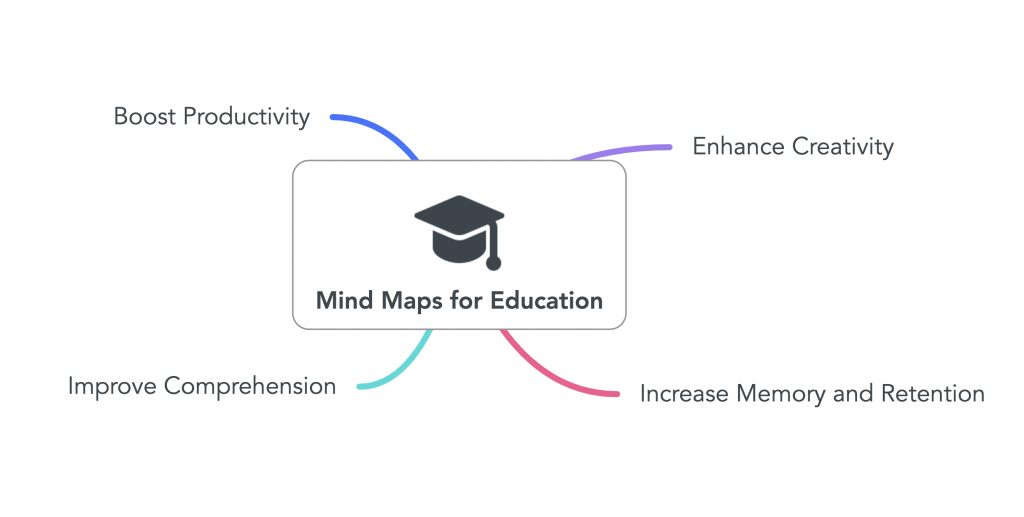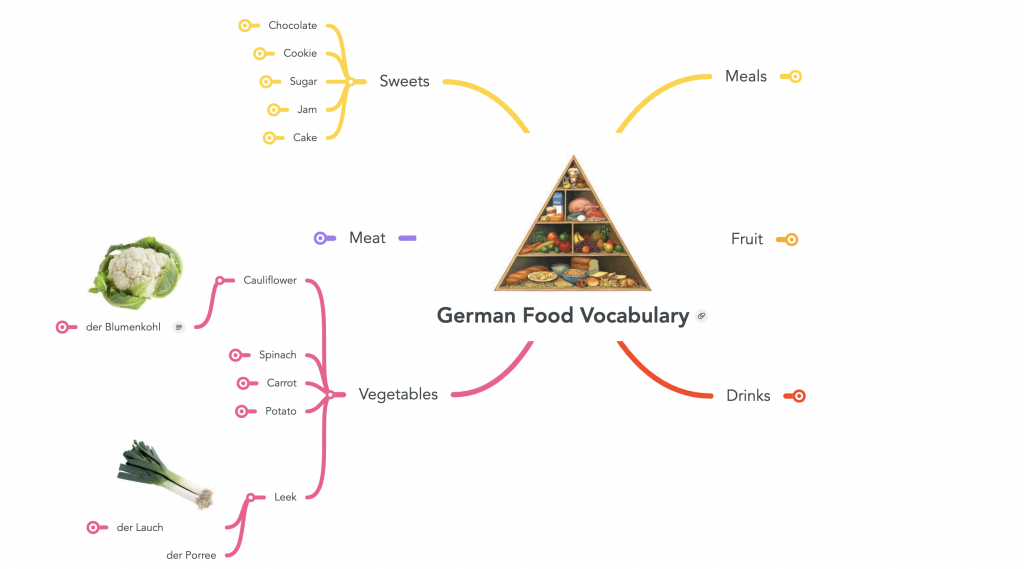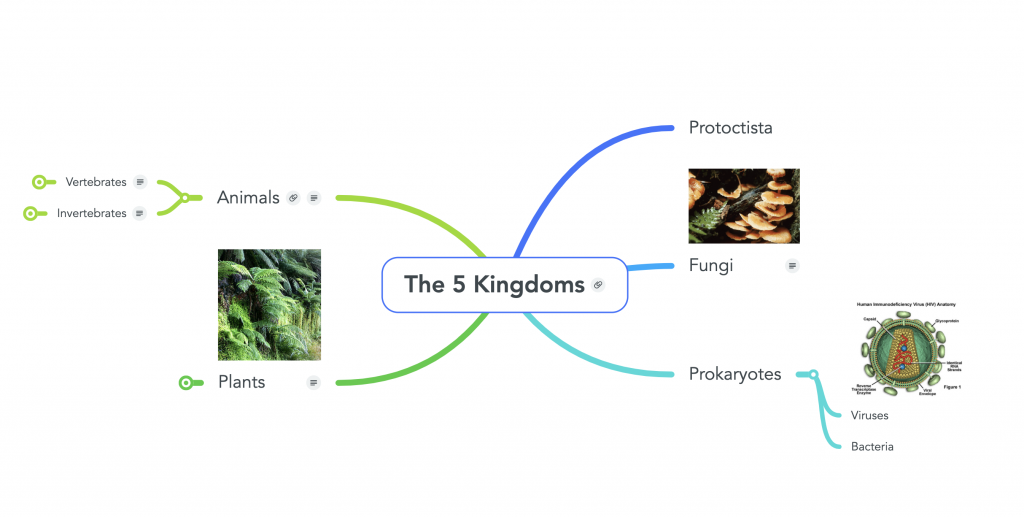Mind Maps in Education Expand Learning Potential
Mind maps are a powerful tool that enables teachers and students to get the most out of their learning experience. Why? Because mind mapping in education allows a learner to fundamentally change the way they interact with information and knowledge. To begin, let’s learn how to incorporate mind maps into education.

What is mind mapping for education?
Sometimes referred to as spider diagrams, a mind map is a visual, branching diagram used to capture ideas and information. They begin with a central idea and branches into sub-topics. Then, ideas radiate from the center out, growing and changing as you go.
Teachers all over the world use mind maps for education in their classrooms to help students take better notes, improve comprehension and critical thinking. Moreover, mind maps for students boost creativity, productivity, and memory.
Mind mapping is the perfect tool for any classroom because they enable students to
- visualize ideas and concepts easily,
- brainstorm effectively, either alone or with other students,
- outline research papers and essays,
- boost reading comprehension,
- improve note taking and idea management, and
- develop critical thinking skills.
Mind mapping as a learning tool
Students must expand their understanding of several subjects simultaneously, from reading and writing to the sciences and foreign languages. Mind mapping allows students to be more effective learners, as they help students to retain more information, understand concepts on a deeper level and think critically.
Learning Strategies to Improve Memory and Retention
If you’ve ever tried to remember someone’s name or where you left your car keys, you know how important your memory is.
Association is an important skill to learn to improve memory. Developing associations changes the way a learner processes information, from collecting pieces of information to connecting or linking information. The latter being more beneficial to memory retention.
And, when a learner combines images with words or phrases, like in a mind map, long-term memory is more likely to be activated because the combination helps to stimulate the brain. That’s why mind maps for education aren’t just a good skill for the classroom, they are a great skill for lifelong learning.

Mind Maps Improve Memory and Learning
As we’ve learned, mind maps are diagrams that visually organize and connect concepts and information. These visual maps provide a number of benefits to learners:
- Visual thinking: Your mind map provides insight into your thinking.
- Filtering of key information: It lets you separate key concepts from fluff.
- Connections, not just concepts: Notes are just disparate ideas unless they are connected!
- Scaffolding of knowledge: The breadth and depth of a topic.
- Big picture and details: Seeing the forest and the trees.
- Analysis and synthesis: Breaking down information into parts and combining them into a new whole.
- Individual and collaborative: Learn by yourself or in teams.
- Flexible: Add information wherever it fits best
Mind mapping helps students learn through association through an engaging, visual, and memorable approach.
Mind Mapping in the Classroom
For students, knowing how to use mind maps feels a bit like hacking the system. Because once a student learns to create a mind map, they are amazed at how much faster it is to memorize information, write essays, study for exams, and prepare projects or presentations.
Traditional note taking versus mind mapping
Note taking helps students structure, manage, and memorize knowledge from academic sources or an instructor. For instance, compared to linear notes, flashcards, or brainstorming with bullet points, a mind map has some clear advantages:
- The radiant structure directly corresponds with the way our brains store and retrieve information.
- Drawing a mind map makes it easier to convey the hierarchy and relationship between individual ideas, enabling you to see the bigger picture.
- A mind map makes use of mental triggers like pictures, colors or doodles to help your brain memorize concepts more easily.
Combining words, images, and colors makes mind mapping a great learning tool. Once you learn how to take notes with mind maps, it doesn’t feel like work!
How to study with mind maps
Developing effective study habits is the key to success as a student. Traditional methods of rote memorization, linear note-taking, and reading dense texts, often leave students overwhelmed and under-prepared on exam day.
Because of the visual nature of mind maps, students and teachers can create study guides using mind maps to aid in building connections between ideas, leading to a deeper understanding of a subject and more retention of complex ideas.

It’s easy to learn how to study with mind maps. The simple act of building a mind map allows students to understand a topic more completely because they are engaging their brains in a multi-sensory process by reading and visualizing information.
And, when preparing for an exam, if a student uses a web-based mind mapping tool like MindMeister, a student can easily review their mind map notes from previous lectures, copy relevant sections of each mind map and build a robust study guide to ace their next exam.
Mind Map for Education Templates and Best Practices
With all the value mind mapping adds to a student’s journey, it’s no wonder millions of teachers are building mind mapping into their curriculum. Here are a few examples of mind maps for education. After you’ve tried a few of the templates below, you can make your own to suit your class needs.
Note Taking
This mind map template features the popular Cornell note taking system, with the added benefit of being entirely web-based. Use this template to quickly take notes, add study cues and learn. This form of note taking is helpful as you can continue to add information as you go. Additionally, you never have to worry about running out of space as you would on paper.
Essay Writing
A mind map makes the writing process easier and more efficient. Additionally, they help to outline thoughts and arguments when writing an essay or term paper. Before you start writing, create a coherent structure of your arguments, counterarguments, quotes, examples, and sources. Then, refine your map to include only the information important to your arguments. Once you’ve completed your outline, you can start writing with ease.
Book Summary
This mind map template provides students with a basic outline and structure for a book summary. Regardless of the book, a student will be able to use this mind map to follow along and document their understanding of the text during the reading process. They can easily turn this mind map into a book report or presentation.
Class Syllabus
Creating a class syllabus is easy with an online mind mapping tool. Once you create the syllabus, share it with your students and their parents. First, add in all the relevant class details. Second, introduce the map to your class. Finally, have them follow along in class. You are able to update the syllabus if the class goals change.
Exam Preparation
Prepping for an exam doesn’t have to be hard. As a student, you can use this mind map template to create a comprehensive study plan. First, enter in all the relevant information about the exam. Then, map out your study plan. Or, as a teacher, create this exam prep for your classroom. Students can easily follow along and excel in their studies.
